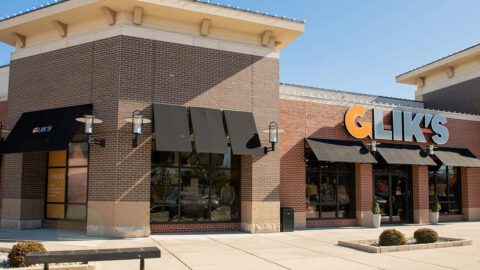The holiday shopping season has always been retail’s high-stakes sprint. Six to eight weeks of peak traffic can account for nearly 20% of annual sales, according to the National Retail Federation, making every friction point along the customer journey that much more costly. Retailers are accustomed to fine-tuning inventory, promotions, and site performance to prepare for the rush. Yet one factor continues to fly under the radar even as its impact on revenue, loyalty, and compliance grows: digital accessibility.
Accessibility is not a niche concern; it represents a massive market opportunity. People with disabilities and their households control an estimated $18 trillion in global disposable income, according to the Return on Disability Group. However, findings from AudioEye’s 2025 Digital Accessibility Index (DAI) found that retail websites averaged more than 350 accessibility issues per page—the highest of any industry analyzed. Those gaps show up in familiar places: missing product descriptions, broken checkout forms, and promotional creative that’s unreadable for customers with low vision.
The business consequences are real. Shoppers abandon carts when forms don’t work with screen readers or when links lead to nowhere. Customer loyalty erodes when service channels aren’t usable by everyone. And legal exposure is mounting: nearly 70% of ADA-related digital accessibility lawsuits this year targeted e-commerce businesses.
To avoid costly mistakes during peak shopping weeks, here are five common retail accessibility barriers uncovered by the DAI and the steps retailers can take to fix them before the holiday season.
1. Product photos that don’t speak for themselves
Images are the foundation of online shopping, yet AudioEye’s scans show that 77% of retail pages had images that lacked descriptive alt text. For the millions of shoppers using screen readers, “IMG_2847.jpg” is no substitute for “red knit sweater with ribbed sleeves.” Without detail, there’s no confidence to buy.
2. Checkout journeys that are interrupted
Retail checkouts averaged 11.5 inaccessible fields per page, and nearly one-third failed basic keyboard navigation. That means shoppers who don’t use a mouse can’t tab through forms or complete transactions. Lost revenue at the point of sale is arguably the most expensive accessibility problem retailers face.
3. Holiday creative that disappears in plain sight
The season’s hallmark colors of red and green may look festive, but they don’t quite meet accessibility contrast standards. AudioEye found 73 unique elements per page (such as buttons or links) that failed contrast requirements, often affecting pricing, calls-to-action, or promotional banners. For shoppers with color vision deficiencies, that can mean missing out on offers entirely.
4. Vague links that impede navigation
On average, retail sites contained eight links per page with missing or vague context, which was the highest of any sector tested. For customers navigating by link text alone, “Read more” or “Click here” is a dead end. Lack of descriptive navigation creates frustration and higher exit rates, particularly on product and support pages.
5. Customer support that isn’t accessible
When primary flows fail, shoppers look for support. But phone-only options or chat tools that don’t work with assistive technology can shut people out completely. In a survey of assistive technology users, 54% said they don’t feel e-commerce brands care about their business. If customers can’t reach support, they don’t just abandon the sale, they may abandon the brand.
How retailers can start fixing these issues
Businesses typically approach accessibility in one of two ways. Some rely on automation, which can scan large volumes of pages quickly and resolve many common barriers before they impact customers. Others turn to expert testing, which catches more nuanced issues like whether alt text actually describes a product, or whether a checkout form is workable with a keyboard.
But the most effective approach combines the two. The gold standard is to use automation to address issues at scale, pair it with expert testing to catch what automation can’t, and then apply custom fixes that reflect the unique design and functionality of the site. This hybrid model delivers the most consistent, reliable experiences to every shopper. And with the holiday rush fast approaching, it can streamline quick improvements to overall site accessibility in order to fix some of the low-hanging fruit ASAP– leading to more completed purchases, fewer abandoned carts, and stronger loyalty.
The competitive advantage of accessibility
Retailers who act now have an opportunity to capture incremental revenue during the busiest part of the year. Accessible design immediately expands reach to a wider audience, strengthens SEO, and reduces legal exposure.
And as search behavior shifts, accessibility plays an even bigger role. Traditional SEO has long rewarded clear, well-structured content, which often overlaps with accessibility best practices like headings, descriptive alt text, and readable links. But the rise of AI-powered engines and generative search means accessibility will also influence how content is interpreted and surfaced in natural language queries.
This evolution has sparked a new focus on AEO (AI Engine Optimization)—optimizing digital experiences so they can be more easily understood and presented by large language models. In practice, the same accessibility practices that help people navigate your site, like semantic headings, descriptive links, and properly labeled images, also help your brand show up in AI-driven results.
Companies that lead on accessibility already outperform peers, with higher revenue and profit margins. Retailers that invest now are doing more than just preparing for the 2025 holiday rush; they’re preparing for how customers will find and shop in the years ahead.
The bottom line
The holiday shopping season is too important to leave any customer behind. Retailers who address accessibility now can capture more revenue, reduce legal risk, and build stronger long-term loyalty at the exact moment shoppers are making brand choices. Smart retailers don’t wait until January to fix what’s costing them sales today. Accessibility is one of the clearest levers available to strengthen results this holiday season and beyond.












